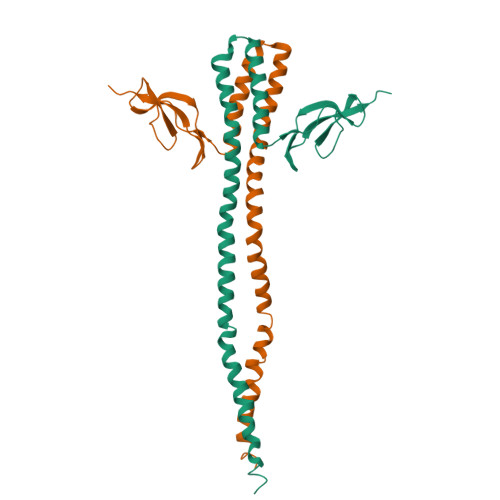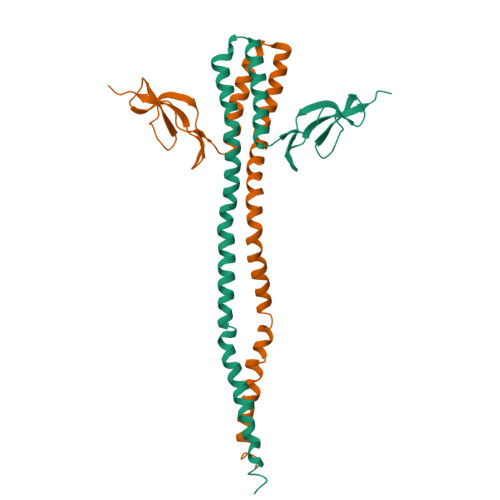Crystal structure of a thermophilic GrpE protein: insight into thermosensing function for the DnaK chaperone system
Nakamura, A., Takumi, K., Miki, K.(2010) J Mol Biology 396: 1000-1011
- PubMed: 20036249
- DOI: https://doi.org/10.1016/j.jmb.2009.12.028
- Primary Citation of Related Structures:
3A6M - PubMed Abstract:
A homodimeric GrpE protein functions as a nucleotide exchange factor of the eubacterium DnaK molecular chaperone system. The co-chaperone GrpE accelerates ADP dissociation from, and promotes ATP binding to, DnaK, which cooperatively facilitates the DnaK chaperone cycle with another co-chaperone, DnaJ. GrpE characteristically undergoes two-step conformational changes in response to elevation of the environmental temperature. In the first transition at heat-shock temperatures, a fully reversible and functionally deficient structural alteration takes place in GrpE, and then the higher temperatures lead to the irreversible dissociation of the GrpE dimer into monomers as the second transition. GrpE is also thought to be a thermosensor of the DnaK system, since it is the only member of the DnaK system that changes its structure reversibly and loses its function at heat-shock temperatures of various organisms. We here report the crystal structure of GrpE from Thermus thermophilus HB8 (GrpE(Tth)) at 3.23 A resolution. The resolved structure is compared with that of GrpE from mesophilic Escherichia coli (GrpE(Eco)), revealing structural similarities, particularly in the DnaK interaction regions, and structural characteristics for the thermal stability of GrpE(Tth). In addition, the structure analysis raised the possibility that the polypeptide chain in the reported GrpE(Eco) structure was misinterpreted. Comparison of these two GrpE structures combined with the results of limited proteolysis experiments provides insight into the protein dynamics of GrpE(Tth) correlated with the shift of temperature, and also suggests that the localized and partial unfolding at the plausible DnaK interaction sites of GrpE(Tth) causes functional deficiency of nucleotide exchange factor in response to the heat shock.
Organizational Affiliation:
Department of Chemistry, Graduate School of Science, Kyoto University, Sakyo-ku, Kyoto 606-8502, Japan.


















